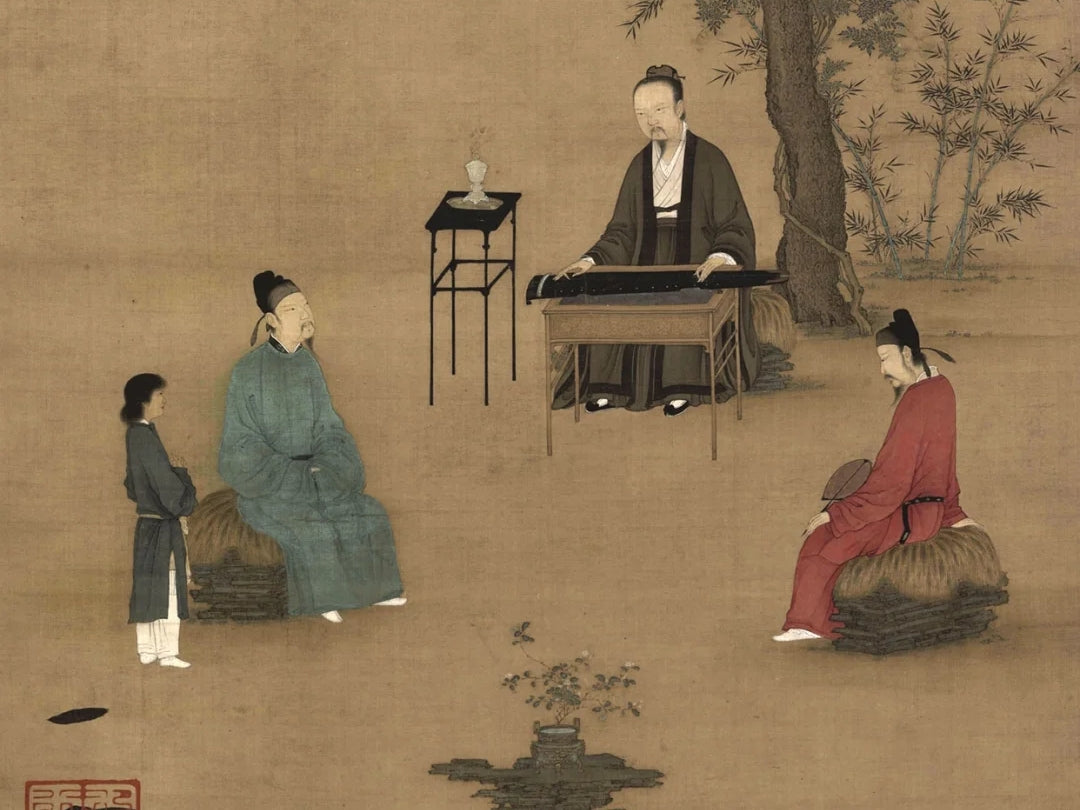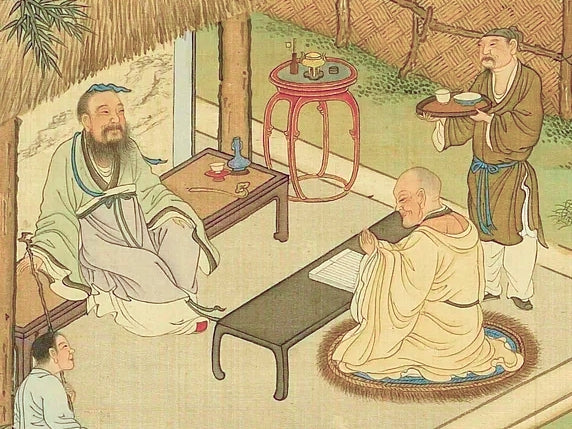Representatives of Ceramics – The Five Famous Kilns of Ancient China
China's ancient history boasts five renowned ceramic production sites, commonly known as the "Five Great Kilns." So, what exactly are these five famous kilns?
Ru Kiln
Ru Kiln is considered the most prestigious of the five kilns. Located in present-day Ruzhou, Henan Province, it originated during the Tang Dynasty (618-907 AD) and flourished in the Northern Song Dynasty (960-1127 AD). Renowned for its exquisite ceramics, Ru Kiln holds a significant place in the history of Chinese pottery.
The key characteristics of Ru Kiln ceramics include their celadon glaze, "sky blue glaze color," "crab claw patterns," "incense ash-colored body," and "sesame-studded nails." The "crab claw patterns" refer to the fine crackles on the glaze surface, while the "sesame-studded nails" result from the use of tiny supports during firing, leaving small marks on the base. Ru Kiln ceramics typically have thin bodies and thick glazes with a jade-like texture and fine crackles. The shapes are often grand and elegant.
Due to their rarity, with fewer than a hundred surviving pieces, Ru Kiln ceramics are highly valuable. Legend has it that Emperor Huizong of the Song Dynasty (960-1279 AD) dreamed of a clear sky after rain, which inspired the creation of Ru ware. Although the story is beautiful, it’s fictional. Modern research confirms that agate powder was used as a flux in the glaze, enhancing the ware's value. In 2015, archaeological excavations at the Qingliangsi kiln site unearthed discarded agate stones, confirming the ancient technique of incorporating agate into the glaze.

Ding Kiln
Ding Kiln can trace its origins back to the Northern and Southern Dynasties (420-589 AD) and began producing white porcelain during the Five Dynasties (907-960 AD) period. It reached its peak during the Song (960-1279 AD) and Jin (1115-1234 AD) dynasties. The kiln site is located in present-day Quyang County, Hebei Province. The name "Ding Kiln" derives from the ancient Dingzhou area where it was situated.
Initially, Ding Kiln produced colored glazes, primarily green glaze. The products, mostly bowls, teapots, and vases, were simple and unadorned, with unglazed lower halves and distinct crackles. White glaze began in the late Tang Dynasty (618-907 AD), and by the Five Dynasties period, Ding Kiln mastered the craft of fine white porcelain. Inscribed with characters like "官official" or "新官new official," Ding Kiln wares were offered as tributes to the imperial court.

Jun Kiln
Jun Kiln's peak production period is debated, with some scholars suggesting the Song (960-1279 AD), Jin (1115-1234 AD), and Yuan (1271-1368 AD) dynasties. Jun Kiln produced both imperial and civilian wares, with the imperial Jun Kiln located in Yuzhou (ancient Junzhou), Henan Province. Unlike the predominantly celadon ware of Ru, Guan, and Ge kilns, Jun Kiln ceramics are known for their multicolored glazes, including rose-purple, sky blue, and moon white. The successful production of "Jun red" marked a significant innovation.
Jun Kiln ceramics are stunning, often changing color during firing, resulting in a wide range of hues. The glaze colors are rich and varied, creating a striking visual effect. One distinctive feature is the "earthworm crawling pattern," where the thick glaze flows and fills the cracks during firing, resembling earthworms moving through the soil.

Ge Kiln
Most classic Ge Kiln ceramics are derived from the Qing Dynasty's (1644-1912 AD) imperial collections. The characteristics of these pieces often do not match historical records of Ge ware, leading to one of the greatest mysteries in Chinese ceramics. Historical documents, such as the Yuan Dynasty's (1271-1368 AD) "Zhizheng Authentic Records" and Ming Dynasty's (1368-1644 AD) "Ge Gu Yao Lun," provide descriptions, but the exact location and nature of Ge Kiln remain debated.
Ge Kiln perfected the art of crackle glaze, producing the iconic "gold thread and iron wire" patterns. These patterns result from varying crack sizes and oxidation levels, giving the appearance of reassembled broken pieces. The glaze features large black cracks known as "iron wire" and fine yellow cracks called "gold thread," creating a harmonious and elegant aesthetic.

Guan Kiln
The Song Dynasty (960-1279 AD) established official kilns, dividing them into Northern Song (960-1127 AD) and Southern Song (1127-1279 AD) periods. The Northern Song official kiln's exact location remains unidentified. After the Southern Song's relocation to Lin'an (now Hangzhou, Zhejiang Province), a new kiln was set up at the foot of Phoenix Mountain and another in the Tortoise Hill area.
Guan Kiln was the first state-owned kiln, producing ceramics exclusively for the royal family. It inherited the Song Dynasty's aesthetic, with thick glazes resembling jade. The edges of the glaze often appear brown, and unglazed bases are black, leading to the term "purple mouth and iron foot." The crackle patterns vary in size and depth, and the primary glaze color is celadon, with hues like pinkish-blue, light blue, and grayish-green.
Guan Kiln ceramics are typically unadorned and plain, enhancing their ancient elegance. The term "purple mouth and iron foot" describes the high iron content in the clay, resulting in gray or purple edges and black or dark brown bases. The shapes often mimic ancient bronze vessels from the Shang (1600-1046 BC), Zhou (1046-256 BC), Qin (221-206 BC), and Han (206 BC-220 AD) dynasties.

Annotations:
- Tang Dynasty (618-907 AD)
- Northern Song Dynasty (960-1127 AD)
- Southern Song Dynasty (1127-1279 AD)
- Five Dynasties (907-960 AD)
- Jin Dynasty (1115-1234 AD)
- Yuan Dynasty (1271-1368 AD)
- Ming Dynasty (1368-1644 AD)
- Qing Dynasty (1644-1912 AD)
- Shang Dynasty (1600-1046 BC)
- Zhou Dynasty (1046-256 BC)
- Qin Dynasty (221-206 BC)
- Han Dynasty (206 BC-220 AD)
Glossary:
- Glaze: A glassy coating applied to ceramics to give them a smooth, often shiny finish.
- Crackle glaze: A decorative technique where the glaze forms a network of fine cracks.
- Body (porcelain body): The main material forming the ceramic piece, typically made of refined clay.
The above content was compiled by Emily Teng studying and summarizing various Chinese, American, and other historical documents. If anyone is interested in learning more, please feel free to contact me at any time : Emily@qilingaura.com



